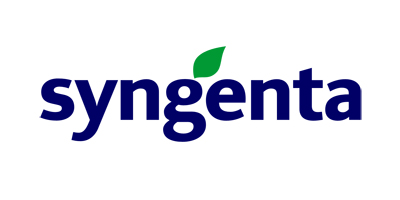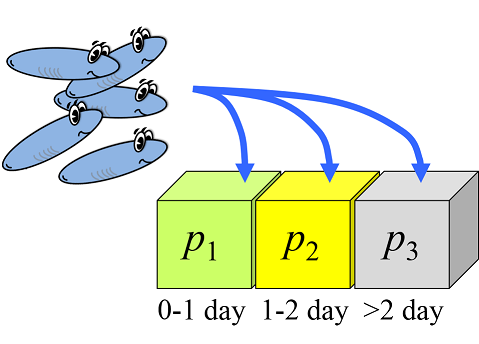About the openGUTS project
Project team. openGUTS
is created by the following people; shown with their main
responsibilities:
- Roman Ashauer, Univ. of York (currently working with
Syngenta), project management and organisation.
- Tjalling Jager, DEBtox
Research, development of the Matlab version
(started as prototype for the standalone version).
- WSC Scientific
GmbH, development of the standalone version 1.0 of
openGUTS.
- RIFCON
GmbH was responsible for the development of the
standalone version 1.1-1.2.
Funding. For version
1.0: Cefic-LRI through the project ECO39.2.
For Version 1.1-1.2: Syngenta Crop Protection AG.
History. In 2017,
Roman and Tjalling obtained funding from Cefic-LRI to
write an extensive e-book on GUTS
and perform a ring test on the available software
implementations. One of the conclusions from that project
was that there was a need for a robust and user-friendly
standalone software to support chemical risk assessment.
The software would follow the workflow proposed by EFSA in
their Scientific
Opinion on TKTD models for risk assessment of
pesticides. However, the potential applications of the
software are much wider (including scientific research).
Cefic-LRI funded an extension of the
project that started in 2018 with the development of a
first version of a Matlab protoype, which was used to
discuss various options for the software in a stakeholder
workshop held in York in November 2018. After that, the
prototype was finalised and WSC started on the task of
developing the standalone software, using the prototype as
the blueprint for the model calculations.
In 2020, Syngenta funded an update of
the standalone to Version 1.1, which was released in
February 2021. This update fixes a calculation error in
the IT model code, and extends the batch calculations of
the LPx. A further update was released in March 2023 to
fix an error message for some (rather extreme) data sets,
and to provide extra time points for LCx estimates to
supper risk assessment for bees.
License information.
openGUTS is free and open source software: you can
redistribute it and/or modify it under the terms of the GNU General Public
License as published by the Free Software
Foundation, either version 3 of the License, or (at your
option) any later version. This holds both for the
standalone version as for the Matlab version. This ensures
that openGUTS will stay in the public domain. Information
about GPL on Wikipedia.
Technicalities. openGUTS
is based on 'frequentist inference' (likelihood-based) and
applies a combination of grid search, genetic algorithm,
and likelihood profiling to explore parameter space to
find the optimum (the best-fitting parameters) and a
sample to be used for error propagation. The GUTS models
that are implemented are the reduced models for pure
stochastic death (SD) and pure individual tolerance (IT).
Analytical solutions are applied as much as possible,
although numerical integration is needed for SD models
when faced with time-varying exposure. More technical
background can be found in the e-book and the
design document (see download
page). The e-book also contains an appendix that
explains how frequentists can use a sample from parameter
space for error propagation (which is not trivial, at
least not for me).
About GUTS
What is GUTS. GUTS
stands for the General Unified Threshold model for Survival.
It is a framework that unifies (almost) all
toxicokinetic-toxicodynamic (TKTD) models for the endpoint
survival. GUTS was born out of a workshop, organised by
Roman Ashauer and Thomas Preuss in 2010, to discuss the
differences and similarities between various survival models
that were in use at the time. It turned out that all of
these models could be seen as special cases of a single
over-arching framework. GUTS was originally published in an
ES&T paper
in 2011. In 2015, a second workshop was organised to
streamline the experiences with GUTS over the last 5 years,
and to prepare the framework for more routine use in risk
assessment.
Recent developments. In
2017-2018, the developments of GUTS took a major leap
forward with the preparation of the e-book on GUTS
(which is now the definitive guide to the framework) and the
preparation of the EFSA
opinion on TKTD models (which judged GUTS as "ready
for use" in risk assessment of pesticides). More
information on GUTS on debtox.info.
What about sub-lethal effects.
Note that GUTS is a model for survival only, and for
other all-or-nothing responses that can be treated as
non-reversible (e.g., immobility, in many cases). GUTS
cannot be used for continuous endpoints such as growth and
reproduction, which require a DEBtox
model (for which there is currently no user-friendly
software).
Super-short description of the reduced GUTS models
Overview. In the
reduced GUTS models, toxicokinetics is combined with damage
dynamics into a single compartment. This compartment has
first-order kinetics, determined by a 'dominant' rate
constant kd. The scaled damage is
subsequently linked to the death mechanism. The openGUTS
software includes only the two extreme cases of pure
stochastic death (SD) and pure individual tolerance (IT).
Under SD, each individual is identical, and damage above a
threshold value (mw) increases the
probability to die (with effect strength, or killing rate, bw).
Under IT, individuals differ in the value of the threshold (mw),
which follows a frequency distribution in the population
with a certain width (the spread factor, Fs).
There may also be deaths that are unrelated to the chemical,
which is covered by a constant background hazard rate (hb).
Statistics. The
expected and observed mortality are compared in a likelihood
framework, using the multinomial distribution. The
multinomial distribution is an extension of the binomial
distribution to more than two possible outcomes. Each
individual will die in one of the intervals of the test:
either between two observation times or after the test has
ended. The multinomial likelihood function uses the
predicted death in each interval (calculated from the model)
and the observed deaths in each interval. As long as the
death of each individual is independent from the survival or
death of the others (which would generally be the case),
this statistical framework is a perfect match to the
problem.
More-complex GUTS models. The
GUTS framework can be used to derive more complex models as
well. For example, models that combine SD and IT (each
individual draws a threshold from a distribution, but also
has a probability to die), and models with separate
compartments for toxicokinetics and damage (the 'full'
model). These are not implemented in openGUTS but they are
part of the BYOM-GUTS
package.
About this website
This website is maintained by Tjalling Jager (DEBtox Research), and started
on 14 May 2019.
|


|



